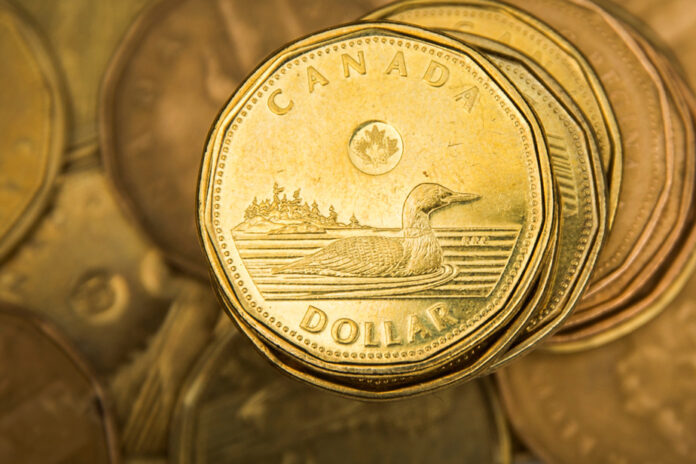(Toronto) The Canadian dollar fell against the US greenback following the Bank of Canada’s decision to maintain its key interest rate at 5.0%. Here’s what that means for Canadians.
As of Wednesday afternoon, it was trading at 72.55 cents to the U.S. dollar, up from 72.83 cents on Tuesday.
It was trading above 75 US cents in July, while its current level brings it closer to a brief low of 72.43 US cents reached in March. It was also worth around 72 US cents last October and dipped below 69 US cents in March 2020, at the start of the pandemic. It was trading above 82 US cents in May 2021.
A weaker Canadian dollar can boost sectors like tourism, and increases the number of foreign visitors, particularly those from the United States, because they get more bang for their buck.
The weaker loonie may also translate into greater profits for Canadian companies that engage in exports, such as those in the oil and gas industry, forestry and manufacturing.
A weaker loonie makes foreign travel more expensive for Canadians, including those planning to visit sun destinations during the winter.
A weaker loonie also makes imports more expensive. In an opinion piece published last year, former Bank of Canada Governor Stephen Poloz explained that a slide that took the loonie from about 80 US cents to 73 US cents or 74 US cents would result in an increase in import prices of 8% to 9%.
He also pointed out that a weaker dollar was also a symptom of broader problems, including weak business investment, which could, in turn, lead to weaker productivity and economic growth.
As the weak dollar pushes up the prices of imports, some observers fear that this will accelerate inflation.
The effects are limited, however, the Royal Bank of Canada argued earlier this year, noting that services dominate Canadian spending. Even for imports, about a third of the cost comes from domestic services like transportation and retail.
Canada has also diversified its imports from the United States, and the loonie has performed better against other currencies like the Chinese yuan, further reducing the impact on inflation, Royal continued. .
He noted, however, that a decline in the loonie could still result in higher prices, including for about 20% of imported food. Categories like fresh fruits, nuts and vegetables, 81% of which are imported, for example, could see their prices increase.















